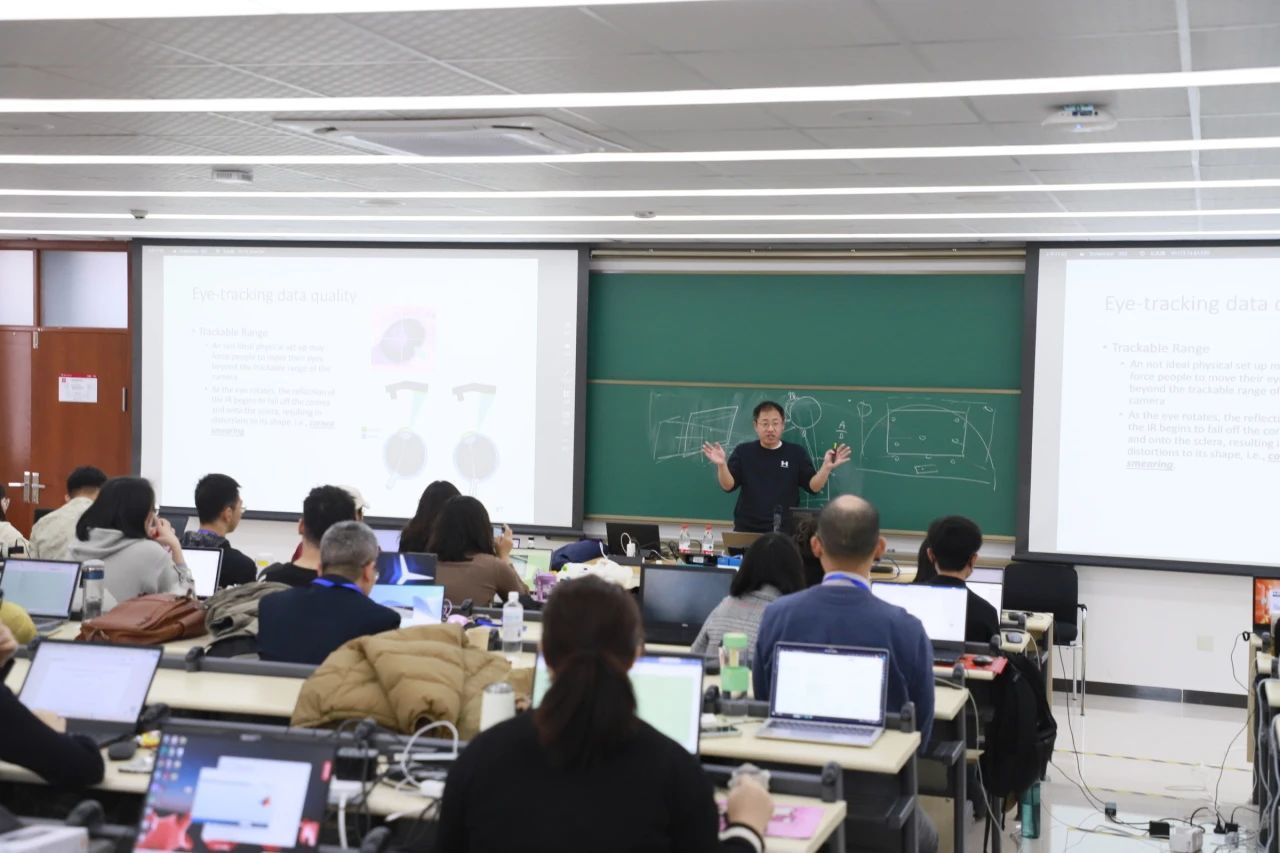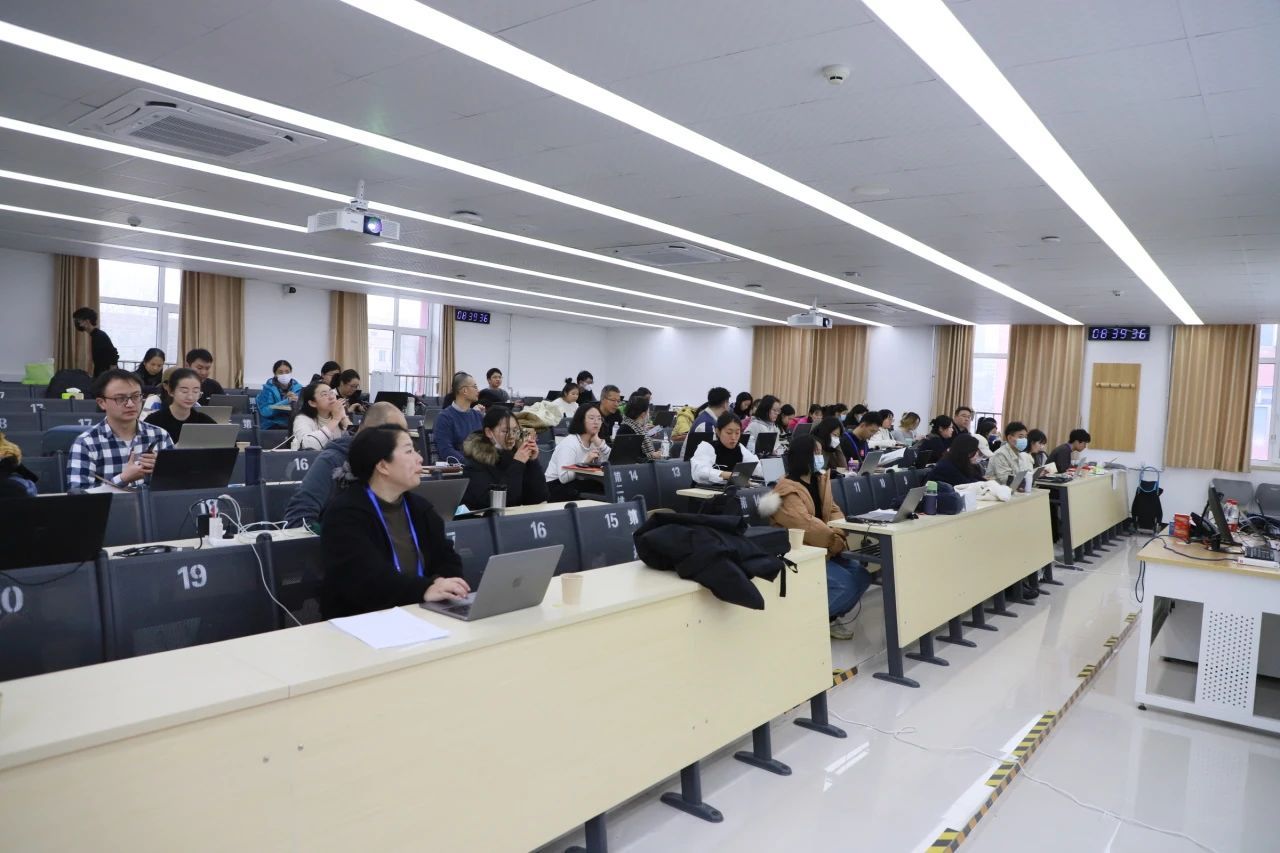On November 25, 2023, the "Cutting-edge Lecture Series on Language Cognitive Science for Chinese and Western Scholars | Language Cognitive Science Research and Application (Phase I):Eye-trackingWorkshop" kicked off its technical training module. The training module lasted for two days and aimed to enhance participants' practical skills in operation and data analysis by providing professional guidance on eye-tracking technology, thus facilitating more extensive research.

The keynote speaker for the first day was Dr. Wang Zhiguo, a researcher at the Center for Psychological Sciences at Zhejiang University. Dr. Wang is a participant in China's "Hundred Talents Program" and primarily focuses on engineering psychology and human-machine intelligent interaction, with additional research interests in working memory, attention, and eye movements.
In the morning of the 25th, Dr. Wang Zhiguo first lectured on the "Fundamental Knowledge and Principles of Eye-tracking Technology." He provided a detailed introduction to the basics knowledge of eye movements, calibration, eye-tracking monitoring, common usage paradigms, methods for recording eye movements, and visual analysis principles of eye movement. The presentation emphasized important factors and experimental steps in eye-tracking experiments and provided an outlook on the application prospects within the field.
Next, Dr. Wang Zhiguo conducted a detailed analysis of the "Programming Practice with Experiment Builder". He introduced the important functions of the programming software "Experiment Builder" , demonstrated its operation methods, and guided the participants to design experiments from simple to complex on this software.

In the afternoon of the 25th, Dr. Wang Zhiguo gave a lecture on "Introduction to Data Viewer for Data Analysis." He introduced the EDF data format and the necessary conversion tools, the relevant functions and basic operations of Data Viewer, as well as the parameters related to generating data. The presentation covered the analysis and visual interpretation of gaze and pupil data, providing detailed explanations of eye movement data during reading.
With a deeper understanding of Data Viewer, the participants, under the guidance of Dr. Wang Zhiguo, proceeded to the practical operation of data analysis using Data Viewer. They learned the data import and export, as well as filtering for regions of interest. Regarding eye movement trajectories on faces, Dr. Wang Zhiguo explained the steps for data processing in time, space, and dynamic processes, helping the participants understand the generation of heat maps and the process of differential analysis.

Dr. Wang Zhiguo's rich, informative, and excellent training content sparked enthusiastic discussions among the students. During the breaks, the podium was filled with students seeking advice and consultation from the professor.
Through a brief conversation, we learned that the trainees gained a lot from this training and were also moved by the experts' patient and meticulous answers.
Q: Are you a teacher or a student?
A: I am a student of foreign linguistics and applied Linguistics at Beijing Language and Culture University.
Q: Are you attending this training because your future studies will use eye tracking techniques?
A. Yes.
Q: Is your research mainly about foreign languages or Chinese?
A: Mainly translation.
Q: What did you learn from today's training?
A. There are great gains.It made me familiar with the principle of eye movement and the operation of software.
Q: Do you think this training is helpful for teachers and students with zero foundation?
A: It is difficult but helpful, and I need to practice again after that.
Q: What is your major?
A: Translation.
Q: Will you use eye movement in your future research?
A: I think it will be used a lot. After all, this is a cutting-edge technology, and it is being used more and more frequently in linguistic research.
Q: What is the purpose of your eye movement training?
A: I want to learn how to write programming. It will be needed in later experiments and doctoral thesis writing.
Q: What did you learn from today's training?
A: I understand the general framework and necessary steps of writing a program, but I still need to practice the details on my own.
Q: Do you have any suggestions for the workshop?
A: Very good, the students in the Center were very enthusiastic. They help us install the software. The teacher was very responsible and patient to answer our questions. I look forward to more practical activities in the course.
The eye-trackingtechnologytrainingon the 25th introduced the basic principles of eye movement experiment design in detail, and demonstrated the analysis process of eye movement data through practical operation.During the training, the students showed their tireless learning spirit and gained a lot.